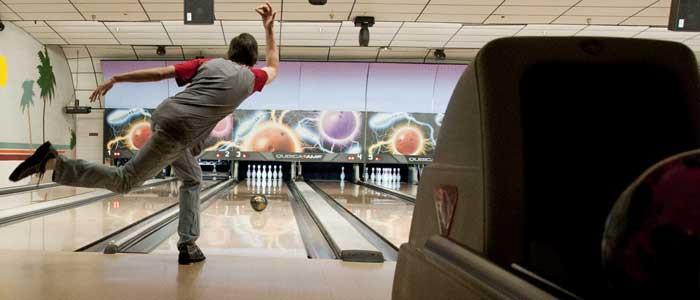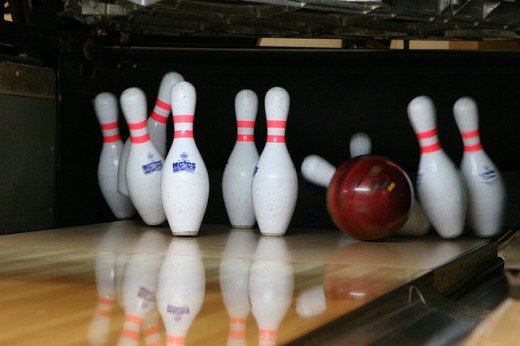Exercises for Bowlers

How to walk the approach
March 1, 2020
How to Bowl Your Best Game Ever2
April 12, 2020
Bowling is a sport and like all sports, it requires training and exercises to improve.
Throwing a 15-pound bowling ball down a sixty-foot lane requires strength and precision, and can even cause injury if you’re not careful. That’s why it’s important to add an exercise routine to your week, especially if you’re an avid bowler or plan to participate in some tournaments.
In bowling, certain muscles and areas of your body are used more than others. Below we’ve outlined a routine specifically designed with bowlers in mind.
Cardio
While bowling may not seem like a cardio-intensive game, it plays a bigger role than you may think. It’s important to stay fresh and remain focused between games, especially during a tournament where you may be bowling for days on end.
According to Science Daily, regular cardiovascular exercise can reduce fatigue by up to 65 percent. Not too keen on running miles every day? No problem. Surprisingly, the same study discovered that low-intensity exercises actually helped to reduce fatigue more than moderate cardio workouts.

So, what are the best low-impact exercises for bowlers? Try swimming, powerwalking, or rowing. Cycling on a stationary bike may be nearly perfect as it utilizes muscles primarily on your lower half, leaving your upper body well rested for throwing plenty of balls.
Workout recommendation: up to 20 minutes a day, 3 days a week. Enough to get your heart pumping for several minutes, but not enough to tire you out too much for bowling.
Stretching
Flexibility can maximize your bowling skills and also help prevent strains and injuries. For bowling, the most important areas of the body to target are wrists, arms, shoulders, upper back, and upper legs.

Lunges – Place your hands on your hips. Move one foot forward and the other foot back, about two to three feet apart depending on your height (closer to two feet if you’re short and more if you’re tall). Keeping your back straight, bend your forward knee and straighten your back knee, so your weight is forward. Hold for ten seconds. Return to resting stance. Repeat 8-12 times for each leg (reverse stance).

Overhead Stretch – Lift your arm up over your head and bend down at the elbow. Your fingers should be tickling the back of your neck. With your free hand, grasp your elbow and pull slightly. Hold. For an additional stretch, tilt sideways at the waist. You should feel a stretch down the side of your abdomen. Repeat 2-3 times for each arm.

Wrist Flexion and Extension – Extend your arm out in front of you. With your other hand, grasp your fingers and lightly pull down until you feel a stretch along your forearm. Hold for 10 seconds. Now reverse and lightly pull your fingers up and back. Hold for 10 seconds. Repeat 2-3 times for each arm.

Cross Stretches – Pull your arm horizontally across your chest until you feel a stretch in your shoulder. Hold for 10 seconds. Repeat 2-3 times for each arm.
Workout recommendation: directly before bowling to help prevent injury and an additional 3 days a week to increase flexibility over time. Or you could accomplish two things at once and bowl 3+ days a week.
Strength Exercises
Strength is possibly the most important factor in bowling when it comes to exercises. Toning the right muscles allows you to grip the ball with ease, hold your body in the correct positions, and execute your throw with precision.

Squats – Spread your legs shoulder-width apart. Place your arms straight out in front of you. Keeping your back straight, bend at the knee until your thighs are parallel with the floor. For an additional workout, drop your arms on either side and add a dumbbell weight in each hand. Repeat for 10 reps.

Pushups – Lay on your stomach on the ground. Place your hands flat against the floor on either side of your chest. Keeping your back straight, push your entire body off the floor until your arms are straight. Only your toes and the palms of your hands should be touching the floor. Lower your body toward the floor but stop two inches away. Raise your body again. Repeat for 20-30 reps.

Dumbbell curl – Stand straight with your arms at your side. Turn your hands until palms face forward. With a weight in each hand, bend your arm at the elbow and lift the weight to your chest. Slowly lower your arm back down. Repeat for 10-15 reps.

Sit-ups – Lay with your back on the floor. Bend your knees up while keeping your feet flat against the ground. Place your hands on either side of your head. Lift your head, neck, and shoulders off the ground and curl in toward your stomach. Lower your head back to the floor. 20-30 reps.
A good workout recommendation: 3 days a week.
Conclusion
Bowling is meant to be fun, but injuries aren’t. Avoid them by stretching before every game and working out every week. Adding a regular exercise routine to your life in addition to bowling can improve your game and your overall health.
Consider the suggestions above, but also do what works best for you. Don’t have access to a pool? Take the dog for a brisk walk around the park. If previous injuries or another disability limits your strength training, talk to a doctor or personal trainer about alternatives, like using weight gloves instead of dumbbells.
Most of all, if you’re bowling for more than just fun, a workout routine is essential to getting the absolute most out of your game. Max out your ability and take your skill to the next level by exercising at least three days a week.



